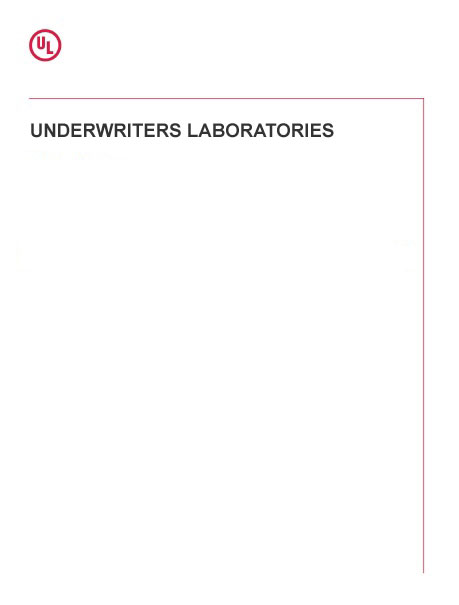
UL 72
Click here to purchase
Please note: All interim revisions for this edition available at time of your purchase will be included.
Tests for Fire Resistance of Record Protection Equipment
UL 72
1 Scope
1.1 These requirements cover the test procedures applicable to the fire-resistance classification of record protection equipment intended to provide protection to one or more types of records when exposed to various durations of fire exposure.
1.2 Record protection equipment consists of self-contained, moveable devices of varying configurations, such as insulated bodies with insulated doors or drawers or lids, nonrated multidrawer devices housing individually rated drawer bodies, and other similar constructions.
1.3 Tests conducted in accordance with these requirements are intended to demonstrate the performance of record protection equipment during exposure to fire, but are not intended to determine acceptability for use after fire exposure.
1.4 Under these requirements, record protection equipment is exposed to a fire endurance test and an explosion test. Equipment intended to provide impact resistance is also exposed to a fire and impact test. The fire endurance test is intended to demonstrate the ability of the device to prevent the development of temperatures and relative humidity (Classes 125 and 150 only) exceeding the specified limits inside the device for the classification desired. The explosion test is intended to demonstrate the ability of the device to withstand a sudden exposure to high temperatures and prevent an explosion of the device from a buildup of steam or other gases. The fire and impact test is intended to demonstrate the ability of the device to protect contents from heat, to the extent described in the requirements, before and after an impact due to falling 30 ft (9.1 m).
1.5 The fire exposures are controlled to achieve specified temperatures throughout a specified time period. These fire test exposures by themselves may not be representative of all fire conditions; conditions may vary with changes in the amount, nature, and distribution of fire loading; the size and fire or nonfire resistive construction of the building; and the location of the device within the building.
1.6 The interior sample temperature and relative humidity limitations applied to the three classes of devices reflect the type of records to be stored in the device. Class 350 rated devices are intended to protect paper records, Class 150 rated devices are intended to protect paper and nonpaper records such as EDP media (magnetic tapes) and photographic records, and Class 125 rated devices are intended to also protect flexible computer disks. However, nonpaper records are not used as contents for the tests described in these requirements since testing to determine the ability of all available nonpaper records to withstand these conditions is not within the scope of these requirements.
1.7 Record protection equipment may incorporate locking devices, but the burglary resistance of such mechanisms is not within the scope of these requirements.
Product Details
- Edition:
- 16
- Published:
- 04/07/2015
